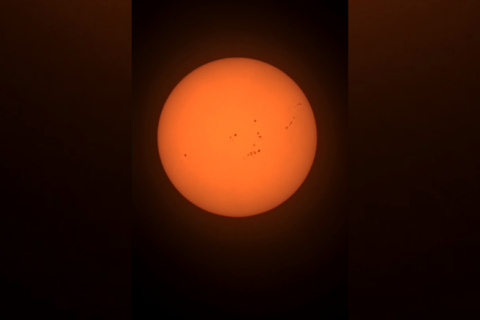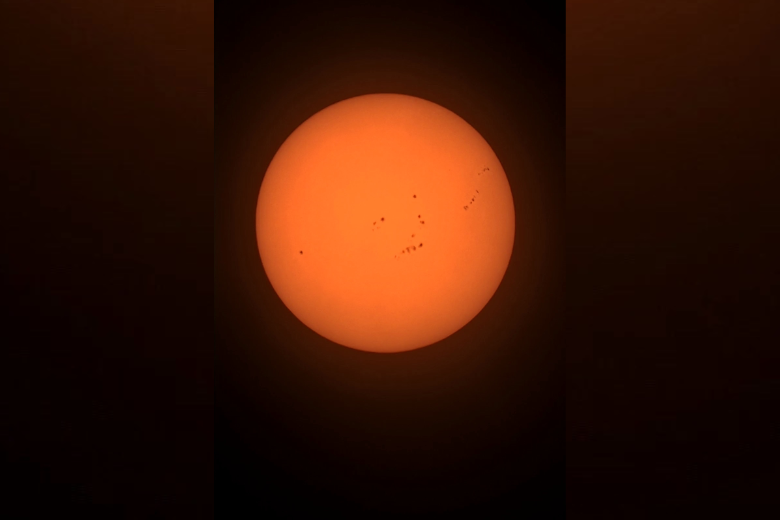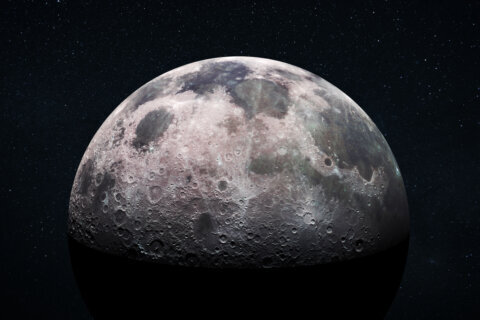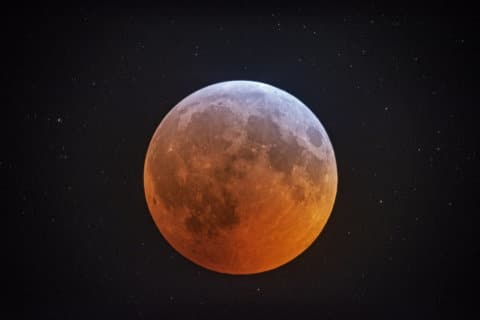
Here we go again.
For skywatchers and wannabe Northern Lights chasers, space weather conditions are currently predicted by National Oceanic and Atmospheric Administration’s (NOAA) Space Weather Prediction Center (SWPC) to be favorable Monday night.
The current predicted line of visibility on the northern horizon is in the lower part of Pennsylvania. That is close enough to make it worth the D.C. area taking a look. I expect this forecast will change as the day goes on, since space weather conditions are still developing. SWPC will issue updates as they are warranted.
Geomagnetic storm watches are out Monday to Wednesday due to a number of coronal mass ejections (CMEs) — large expulsions of plasma and magnetic field from the sun’s corona in the outermost part of the sun’s atmosphere, according to NOAA.
Solar activity was elevated through the weekend and various events, including solar flares and filament eruptions associated with CMEs, NOAA SWPC said. Some CMEs could arrive Tuesday and into Wednesday. NOAA said the ones that arrived Monday could result in G1 or minor storm levels, but most of the activity will liley take place on Tuesday, when CMEs from Saturday and Sunday arrive.
“This could lead to G2-G3 levels as indicated by the WSA-Enlil model,” NOAA SWPC said, with more continuing into Wednesday.
This geomagnetic storm and associated aurora event are not predicted to reach the historic levels, such as the last one on May 10. It’s far more likely that we could experience an event like in March, which involved a similar G3 (strong) geomagnetic storm. NOAA Space Weather Scale descriptions can be found online.
The best bet is to monitor WTOP Weather for sky conditions, and the NOAA, plus other space-related social media sites, including EarthSky.org, space.com and space weather physicist Tamitha Skov’s X for updates. It will be worth taking a look to the north from a dark sky site with a clear horizon. You might be able to detect some color in the sky if aurora are present but they would likely be low on the northern horizon. Wide field binoculars will help your search.
Use a camera or smartphone that can take exposures of several seconds — including using “night sky” or “low light” settings if your camera has them — of the northern horizon. Steady the camera or use a tripod for best image results. The camera may capture aurora that your eyes did not.
The D.C. area had several aurora events visible in 2023, including in March and November. And the area is on a roll for 2024, with more coming in all probability.
I check spaceweather.com every day just as I do my local weather. The site has a daily snapshot of what the space weather in the solar system is going to be like and a current image of the sun.
Monday’s posting explains what happened on the sun the past few days to cause the current space weather. My image of Monday’s sun shows a lot of sunspots.
With terrestrial weather being such a factor in the daily lives here in the D.C. region, and frankly the rest of the world, space weather has a direct effect, and can produce a variety of events, including Monday’s geomagnetic storm and the aurora.
Space weather, like terrestrial weather, is caused by Earth’s interaction with the sun. While giving warmth and energy every day, what many people may not know is that it undergoes an 11-year solar cycle that can affect space weather throughout the solar system.
The sun is a 4.5-billion-year-old star that humans have been monitoring since the time of Galileo. Currently, humans have a fleet of spacecraft that monitor the sun and space weather 24 hours, 7 days a week, 365 days a year.
The sun is currently in Solar Cycle 25 and is at Solar Maximum. At Solar Maximum, the sun produces more sunspots and solar events, which produce space weather events like Monday’s level G3 geomagnetic storm. In fact, solar researches believe the sun is already starting Solar Cycle 26.
The sun had an episode of disturbed behavior centuries ago. On Sept. 1, 1859, the sun experienced a solar storm episode that was observed by solar astronomer Richard Carrington and ended up bearing his name: “The Carrington Event.” This was a watershed event in solar astronomy and the sun’s effects on the Earth, unlike anything that’s happened since.
If a Carrington-level solar event were to happen today, the impact on modern society’s infrastructure could be potentially catastrophic, especially the electrical grid which powers everything. If you think this is unlikely or “too sci-fi” to be true, I suggest you read the report by the National Academies of Science published in 2008.
You listen to WTOP for “traffic and weather together on the 8s.” Maybe now you will want to include a check on space weather, too, as part of your daily weather routine.
Follow Greg Redfern on Facebook, X and his daily blog to keep up with the latest news in astronomy and space exploration.
Get breaking news and daily headlines delivered to your email inbox by signing up here.
© 2024 WTOP. All Rights Reserved. This website is not intended for users located within the European Economic Area.








